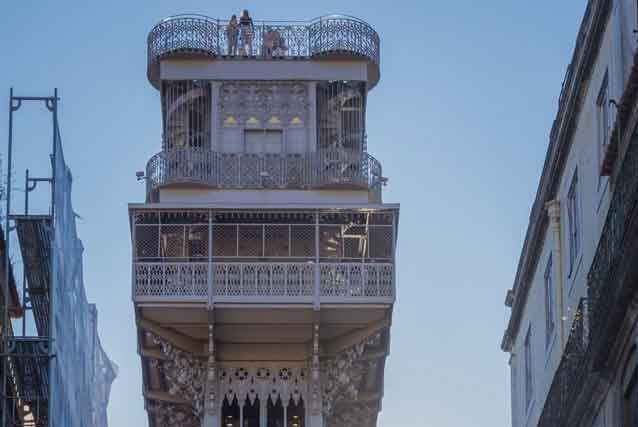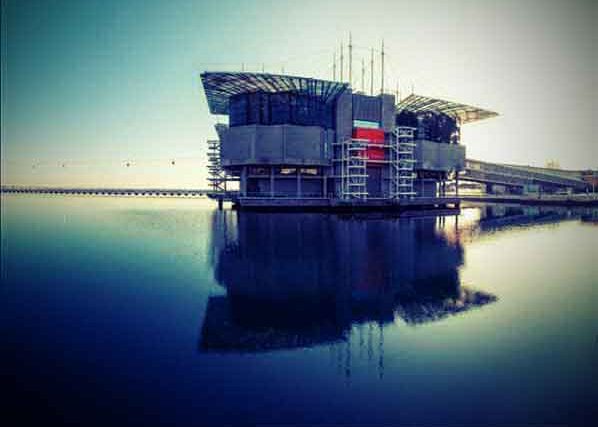Lisbon Portugal tourist attractions: The capital of Portugal is located at the mouth of the Tagus River meeting the Atlantic Ocean and is the westernmost capital of a mainland European country with its rich architecture, beautiful old city and warm climate. Lisbon’s popularity has grown massively over the past few years and has become a hidden gem today. The city attracts more than 6 million tourists per year who are attracted to its historical and cultural heritage.
As a tourist destination, this riverside city is as rich and diverse as the country’s long history. From the ruins of a Moorish castle perched on top of one of the cities seven hills to the sidewalk cafes snuggled against the walls of ancient Visigoths, remnants of Lisbon’s colorful past are everywhere.
It has the Latin name Lusitania, while the official name of this country itself is the Republic of Portugal. Lisbon is proud of the role it played during Portugal’s Age of Discovery, and monuments celebrating explorers voyages like Vasco DA Gama are among the most important attractions in Lisbon.
There are many tourist destinations in this country which are quite famous. Several cities in this one country are also included in the ranks of the world’s best tourist cities, which you must visit. One of the cities that must be visited is Lisbon. A city on the coast of Portugal.
What is best things to do in Lisbon?
You can explore the narrow streets of the old quarter, take a walk on the riverside promenade, or take a walk in the parks and green parks. In fact, enjoy Lisbon like the locals do, at an easy pace and with no rush, and you’ll quickly fall for the welcoming character and captivating charm.
1. Lisbon Cathedral – Sé de Lisboa.
In the city’s Castelo district near the ancient Alfama neighborhood, Lisbon’s fortified Roman cathedral has undergone several design changes since the original structure was consecrated in 1150. A series of earthquakes culminating in a devastating 1755 earthquake completely destroyed what stood during the 12th century. What you see today is a mix of architectural styles, the standout features of which are the twin bell towers that decorate the downtown skyline, especially an evocative afternoon when the sun sets burning brick with gilded layers.

Inside, majestic rose windows help light up the somewhat gloomy interior, and you’ll likely head straight to the treasury where the cathedral’s most valuable artifacts are on display, items including silver made of trophies and relics, intricately embroidered robes, figurines, and a number of rare pictorial manuscripts.
It’s also worth lingering in a Gothic abbey, not so much for its chapel series (including one that preserves 13th-century wrought-iron gates), but for the fact that excavations in place have revealed the foundations of Roman and Moorish residences. (The cathedral was built on the ruins of the mosque) and the archaeological excavations are a worthwhile visitor attraction in itself.
2. Elevador de Santa Justa.
Looming slightly above the rooftops of Lisbon’s Baixa (city center) district is the bizarre-looking Santa Justa Lift, the neo-Gothic elevator and the city’s most eccentric and new means of public transport. At first glance, a glued wrought iron frame and a gray paint magic drawing of a battleship from the Eiffel Tower in Paris.
French architect Raoul Ménier du Ponsard, an apprentice of Gustave Eiffel, designed the elevator, which was inaugurated in 1901. It was built as a means of connecting Baixa with Largo do Carmo in the Bairro Alto neighborhood, a trendy area of the city peppered with expensive shops, Fado’s house, and a small restaurant.

Today, curious tourists rather than the public who travel the 32 meters up travel in wood-paneled cabins that still feature the original polished brass instruments. The cabins creak toward the platform that sits just below the top terrace.
You can exit and walk across the bridge to the Bairro Alto or choose to climb the spiral staircase that leads to the upper terrace. The view from the top is incredible and take in the busy canvass of the city in the pedestrian streets, picturesque squares and ubiquitous castles and the Tagus River. You can also enjoy a beautiful perspective of the nearby Igreja do Carmo.

This subway station is almost hidden behind the facade on Rua de S. Paulo with the inscription “Ascensor DA Bica”. While here, it’s worth exploring this quiet little area known as Bica, which flows from Calçada do Combro / Rua do Loreto to Tagus. Only a few cars travel here because of its sloping topography, narrow streets and congested buildings.
3. Museu Nacional do Azulejo.
Located a little way off the tourist trail east of the city center, the National Tile Museum is worth seeking out for its unique collection of azulejos decorative tiles and the extraordinary ornate Igreja Madre de Deus. Housed within the church and the foyer of the convention DA Madre de Deus, this is the only museum in Portugal dedicated to this historic art form.

This permanent exhibit traces the evolution of tile making from the Moorish times through Spanish influence and the emergence of its own Portuguese style. Displayed chronologically, some of the earliest examples date back to the 15th century and are shown as complete panels of intricate patterns in bright colors.
The Portuguese tile work features the more familiar blue and white azulejos, with one outstanding piece, the 36-meter-high panoramic view of Lisbon’s tiles, one of the highlights of the collection.
The entrance to the museum includes access to the 16th-century Madre de Deus church. Here, visitors are treated to one of the church interiors, a lavish Baroque masterpiece of gilded wood, gleaming 17th-century Azulejos and a stunning Rococo altar.
4. Torre de Belém.
Considered the most historic epitome of all of Lisbon’s historical monuments, the Belem Tower crouches in shallow water near the mouth of the Tagus River as a symbol of Portugal’s Age of Great Discovery during the 16th century. It was built in 1515-21 as a fortress and was originally located in the middle.
This tower represents the high point of Manueline’s decorative architecture. Its ornate façade is decorated with fantastic maritime motifs – all twisted ropes and Armillary balls carved from stone. Indeed, this highly valued and iconic monument is protected as a UNESCO World Heritage Site.
The most interesting interior feature is the King’s Chamber on the second floor where it opens onto a Renaissance loggia. The coat of arms of Manuel I sits atop an elegant arcade. Climb the very steep spiral staircase to the tower terrace on the top floor, and you will be rewarded with a panoramic view of the waterfront and the river esplanade.
5. Museu do Oriente.
West of the city center, near Alcântara, and home to a superb collection of oriental art built by the influential Fundação Oriente, this attractive cultural facility illustrates Portugal’s presence in Asia and the Far East. The permanent exhibits are arranged on two levels and grouped around some of the core areas of oriental art, particularly Chinese.
Displayed under subdued lighting, but with individual pieces showcased under a sharp spotlight, this collection takes you on an extraordinary journey exploring the forged cultural and trade relations between Portugal and India, Japan, Myanmar, Macau and Timor.
A large teak door from the 17th century India decorated with iron and bronze greets you on the First Floor, and opens the way to a dazzling hall with artifacts such as the delicate Namban sail depicting Portuguese sailors descending from Kurofune to meet the local Japanese.
Macau, a former Portuguese colony, is well represented by interesting pieces such as suspended boat-shaped hammocks made of wood, sugarcane, and oriental gold carved, varnished, and iron.
Elsewhere, impressive displays of terracotta statues of Chinese Ming and Qing dynasties are placed near a series of forbidden 17th-century Samurai chainmail armor. But try to look for smaller pieces, items like a quirky collection of Chinese tobacco boxes and silver alloy bracelets from Timor.

A large teak door from the 17th century India decorated with iron and bronze greets you on the First Floor, and opens the way to a dazzling hall with artifacts such as the delicate Namban sail depicting Portuguese sailors descending from Kurofune to meet the local Japanese.
Macau, a former Portuguese colony, is well represented by interesting pieces such as suspended boat-shaped hammocks made of wood, sugarcane, and oriental gold carved, varnished, and iron.
Elsewhere, impressive displays of terracotta statues of Chinese Ming and Qing dynasties are placed near a series of forbidden 17th-century Samurai chainmail armor. But try to look for smaller pieces, items like a quirky collection of Chinese tobacco boxes and silver alloy bracelets from Timor.
The Second Floor accommodates an extensive Kwok Collection consisting of more than 13,000 examples of mythological figures and creatures cut from cowhide and parchment and used by masterminds in shadow theaters from Turkey to Thailand. The Orient Museum will absorb a few hours of your attention, but if you visit midday, you can stop for lunch at the 5th floor restaurant. The Second Floor accommodates an extensive Kwok Collection consisting of more than 13,000 examples of mythological figures and creatures cut from cowhide and parchment and used by masterminds in shadow theaters from Turkey to Thailand. The Orient Museum will absorb a few hours of your attention, but if you visit midday, you can stop for lunch at the 5th floor restaurant.
6. Museu Nacional de Arte Antiga.
The National Museum of Ancient Art is one of Lisbon’s cultural highlights, and a “must see” on any itinerary. It is Portugal’s national gallery and houses the largest collection of 15th and 16th-century Portuguese paintings in the country. An equally impressive display of European, Oriental and African art adds to the allure.
The museum is located west of the city center in a 17th-century palace, built over the remains of the Saint Albert Carmelite monastery, which was nearly destroyed in the 1755 earthquake. Fortunately, the chapel survived and was integrated into the building.
Set over three levels, the extensive permanent collection takes up a good two hours of your time. Begin by exploring the aforementioned St Albert’s Chapel on Level 1 and then wind your way through the rooms exhibiting Portuguese applied art – furniture, rugs and textiles, among other objects, many of which reflect the influence of Portuguese colonial exploration.

The level 1 houses some truly outstanding pieces. Notable works here include Hans Holbein’s Virgin and Child with Saints (1519) and Albrecht Dürer’s beautiful 1521 portraits of St Jerome. The jaw-dropping fantasy that is The Temptations of St. Anthony (1500) by Hieronymus Bosch is a major highlight.
Jewelry, ceramics, gold, silver, and art from the Portuguese Invention all hold Level 2 views, but make a point of studying the interesting 16th-century Japanese Namban sails depicting Portuguese trade in Japan.
Level 3 is devoted to Portuguese painting and sculpture. The “don’t miss” treasure is the altar depicting the Saint Vincent Panel, painted in 1470-80 by Nuno Gonçalves, official artist for King D. Afonso V.
The gardens are at the rear of the museum, beautiful river views can be enjoyed from the terrace, and there is a cafe where you can relax and contemplate the visual feast you have just encountered.
7. Museu Calouste Gulbenkian.
Sparkling in Lisbon’s cultural crown, the Museu Calouste Gulbenkian is also one of the most famous museums in Europe. The facility, located in a lush green park north of the city, is named after Calouste Sarkis Gulbenkian, an Armenian oil lord born in 1869 who passed his extensive private art collection in Portugal shortly before his death in 1955. Following his terms of endowment, it’s a foundation created, the core of which is this purpose-built art complex. Private art collection in Portugal shortly before his death in 1955. Following his terms of endowment, it’s a foundation created, the core of which is this purpose-built art complex.
The stunning Gulbenkian stacks feature priceless artwork from around the world, spanning 4000 years, from ancient Egyptian times to the late the 20th century. With so many works from so many different periods in history to absorb, you could easily spend half a day exploring the exhibition galleries, but your patience will be rewarded with a captivating journey through one of the continent’s finest art collections.

Incredible highlights in the Gallery of Classical and Oriental Art including 11 Roman medals, part of a pile excavated in Abu Qir, Egypt, are commemorated in commemoration of the Olympic Games held in Macedonia in 242. In the 17th century Persian and Turkish rugs on display are some of the most preserved in the world and a tangible proof of Gulbenkian’s interest in Islamic art.
Moving on to European Art (14-17 centuries) and among Rembrandts, Van Ducks and other masters are the Portrait of Hélène Fourment (1630) by Rubens – Gulbenkian’s favorite painting. Remarkably, the rare clocks and timepieces displayed in France’s 18th-century Decorative Arts hall have all worked well. Fix your eyes on the chair that used to belong to Marie Antoinette. One room is dedicated to Francesco Guardi and his studies in Venice. See, too, for the graceful Diana Houdan, sculpted in 1780.
The museum tour ends with a collection of jewelry and glasses made by French jeweler Art Nouveau, René Lalique (1860-1945). None of the brooches and necklaces have ever been used, except for the surprising and flamboyant Dragonfly female corsage ornament, worn once on stage by actress Sarah Bernhardt (1844-1923).
8. Oceanário de Lisboa.
The Lisbon Oceanarium is one of the best aquariums in Europe and one of the largest in the world. It is also arguably the most family-oriented of all the city’s visitor attractions. Designed by Peter Chermayeff and built for the World Expo 98 Expo in the area now known as Parque das Nações.

Home to a wide variety of fish and marine animals, including dozens of different birds species. The ingenious layout represents four separate seas and landscapes, which are habitats for the Atlantic, Pacific, Indian and Antarctic oceans.
Oceanário de Lisboa actively promotes the conservation of the world’s oceans, and in addition to its envious reputation as one of Portugal’s most popular tourist attractions, has garnered global acclaim for its marine environmental awareness campaign. But most of all, it’s really fun.
9. Mosteiro dos Jerónimos.

A highlight of any Lisbon sightseeing tour, the 16th-century Jerónimos monastery is one of Portugal’s most famous landmarks, a stunning monument of immense historical and cultural significance worthy of the UNESCO World Heritage Site award.
10. Castelo de São Jorge.
The most famous castle in Lisbon, the Castle of St. George, has a majestic position near Alfama on a hilltop overlooking the Portuguese capital. It is one of the most popular tourist destinations in Lisbon. Its impressive fortresses, interesting museums and interesting archaeological sites combine to make this castle a fun experience for the whole family, and kids will love climbing the sturdy walls and towers that surround the courtyard.

There has been a fort on the site since the Iron Age, but it was a castle that the Moors defended against invading Christian forces before it was finally captured in 1147 by Afonso Henriques. The victorious king built Aláçova Palace, home to subsequent kings until a new royal residence was built near the river. The foundations of the palace are part of the excavations seen today. For the most part, visitors are quite happy to admire the incredible views from the observation terrace which provide panoramic views of the city, the Tagus River, and the distant Atlantic Ocean. For a different perspective, there’s a Camera Obscura periscope housed in one of the towers giving you 360 views.
FAQs Lisbon Portugal Tourist Attractions.
Are there any unique features of Lisbon Cathedral’s architecture?
Lisbon Cathedral boasts a unique architectural amalgamation. The Romanesque façade, Gothic cloisters, and Manueline influences create a visually striking structure. The cathedral’s design reflects Portugal’s diverse architectural history, offering a captivating journey through different periods.
Are there any must-visit landmarks in Lisbon?
Absolutely, one of the best things to do in Lisbon is to visit Belém, home to iconic landmarks like the Belém Tower and the Jerónimos Monastery. These architectural gems showcase Portugal’s maritime history and architectural brilliance.
Are there family-friendly activities in Lisbon?
For family-friendly fun, explore the Lisbon Oceanarium, one of the largest indoor aquariums in Europe. Located in Parque das Nações, it’s an immersive experience for all ages, showcasing marine life from different ecosystems around the world.
What is the best way to enjoy Lisbon’s cuisine?
Indulge in Lisbon’s culinary delights by exploring the vibrant Mercado da Ribeira, also known as Time Out Market. This food market brings together a diverse range of flavors, allowing visitors to savor the best of Portuguese cuisine in one location.
Is there a recommended day trip from Lisbon?
A must-visit day trip from Lisbon is Sintra, a UNESCO World Heritage site known for its fairy-tale palaces and lush landscapes. Explore the colorful Pena Palace and the historic town center, making for an unforgettable excursion.

Transform Your Travels with These Must-Haves
Elevate your adventures with these indispensable travel essentials. Unleash wanderlust, buy now, and embrace exploration!
Further Reading.
We hope you found this article useful. If you want to read more, here is a selection of articles you might like:
- To see all the articles about travel destinations and tourism topic categories, visit my Travel Destinations page.
- Looking for travel news, tips, and guides you can find more on Travel News.
- We unveil 10 picturesque countrysides that captivate with their European vibes. Destinations and cities echo the charm of Europe in the United States.
- If you are interested in my review, check out: Canon EOS M50 Mark II Mirrorless Digital Camera with 15-45mm Lens.
- Best New Year’s Eve Celebrations Around the World including Times Square, London Eye, Paris, Sydney, Scotland, Disneyland, Hong Kong, Dubai, Rio de Janeiro and Hongkong.
- Extreme sports what you need to know about wingsuit flying.
- Take a look at this packing list, Travel Essentials, that you can finally rely on. Recommend to pack for any vacation, the best way to pack a backpack is to save space.
- If you liked this article, then please subscribe to our YouTube Channel and Dailymotion Channel for Inspiring travel videos from around the world.
- Affiliate Disclaimer: Many of the links above are affiliate links, and as an Amazon Associate, I earn from qualifying purchases. If you click on them and make a purchase, I’ll receive a small commission (at no cost to you) and really appreciate your support.
- Thank you for visiting. Please feel free to come again anytime.

